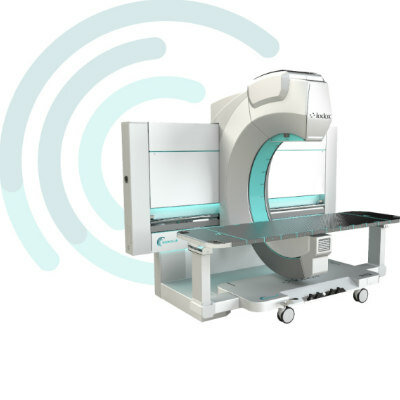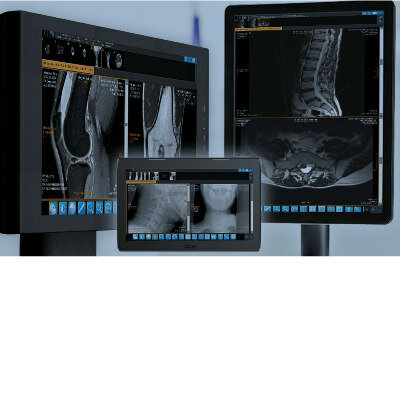PET Scanner Shows Promise in Breast Cancer Management
By MedImaging staff writers
Posted on 16 Jan 2008
A new high-resolution positron emission tomography (PET) scanner has been designed to image small body parts such as the breast and hand.Posted on 16 Jan 2008
Naviscan PET Systems (San Diego, CA, USA), a company specializing in high resolution PET scanners, announced in new clinical data from a study using the PEM Flex scanner in breast cancer management in December 2007, at the San Antonio (TX, USA) Breast Cancer Symposium.
PEM Flex Solo II is commercially available and U.S. Food and Drug Administration (FDA)-cleared. It utilizes PET technology for the breast application known as positron emission mammography (PEM), which allows clinicians to visualize and characterize lesions as small as two mm in size.
Kathy Schilling, M.D., medical director of Breast Imaging and Intervention at the Center for Breast Care at the Boca Raton Community Hospital (FL, USA), presented data from her study involving 90 breast cancer patients, comparing the effectiveness and accuracy of breast imaging with PEM, magnetic resonance imaging (MRI), and whole body (WB) PET/computed tomography (CT) for pre-operative surgical planning.
"PEM's high-resolution imaging is right in the range of ductal size which is where cancer typically originates. We were pleased to find PEM demonstrated 93% sensitivity with ductal carcinoma in situ cases and PEM also proved to be as sensitive as MRI in detecting invasive and non-invasive primary breast lesions,” said Dr. Schilling who has been studying PEM for over one year. "Besides the image quality of PEM and its ability to light up very small lesions, there is an ease of interpretation as you are only looking at some 48 images as opposed to hundreds with MRI.”
Dr. Schilling has been using the PEM Flex scanner in her practice as a tool for assessing additional and unsuspected disease in the breast, and compares these findings with that of MRI. She is also a principal investigator in a 400 patient, multi-center clinical trial comparing PEM and MRI in breast cancer patients to be completed in 2008.
Naviscan PET Systems designs and develops compact, high-resolution PET scanners that are intended to provide organ-specific imaging, guide radiologic and surgical procedures, and minimally invasive therapy.
Related Links:
Naviscan PET Systems














